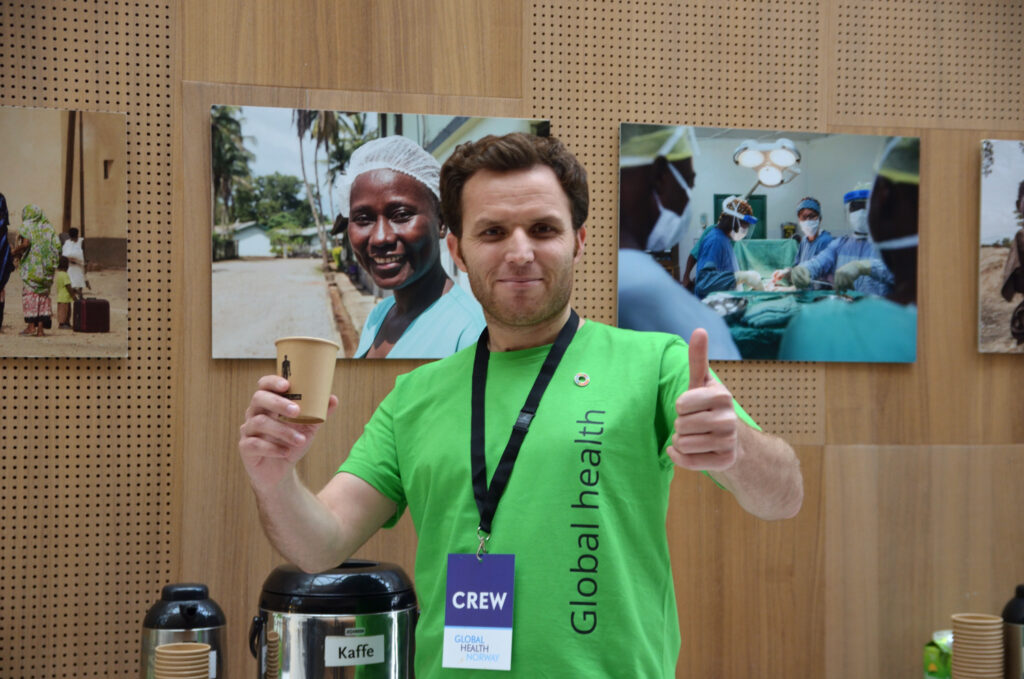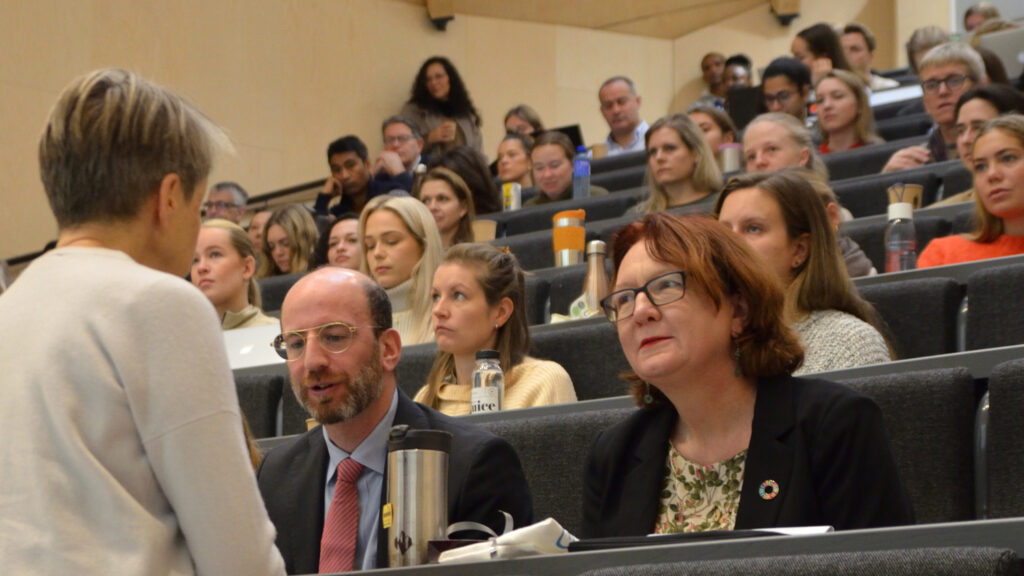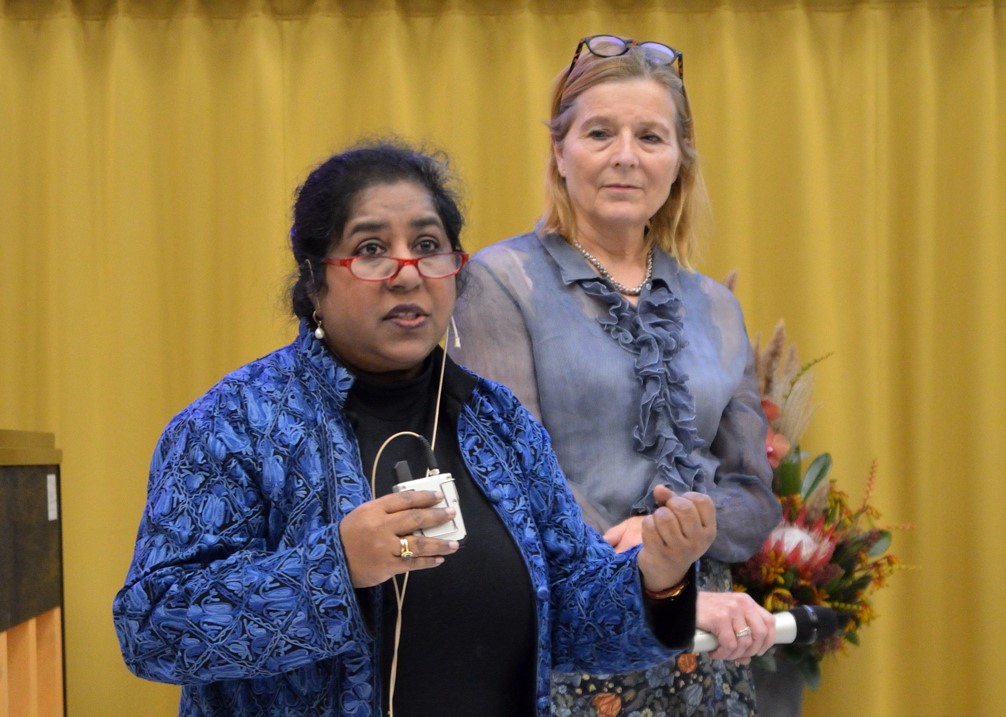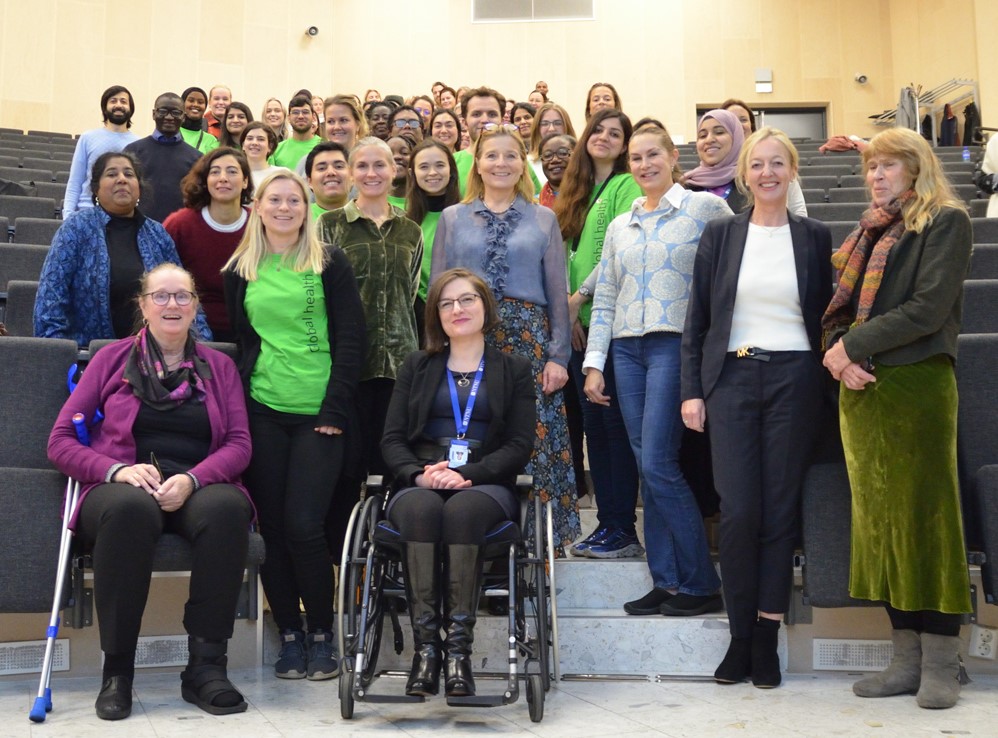Global health discussions for a more equitable world
Almost two years into a global pandemic and a mere nine years away from the target achievement date for the Sustainable Development Goals, Women in Global Health Norway and Global Health Norway convened at St. Olav’s University Hospital for their annual conferences.
Through discussions about technology, education, capacity-building, and women’s health, conference attendees engaged in productive discourse that encouraged participation in cross-disciplinary collaborative action in pursuit of a more equitable world.

Day 1: Global Health Norway Conference
The Global Health Norway conference began on Tuesday with a speech from the Norwegian State Secretary Bjørg Sandkjær, who framed the context of the two-day conference series with a well-received commitment to continue investing in global health issues for the coming years, noting that global health remains at the top of the new government’s priority list.

Following the State Secretary’s welcome address, conference participants were treated to a series of five subsequent talks, all focusing on technological health innovation. At the heart of these talks was the desire to bridge the gap between academia and practice in order to create multi-sector solutions to problems such as neonatal jaundice (Picterus), hearing loss (I hear you), and drug delivery (Zipline).
Professor Muhammad Zaman, PhD, the Howard Hughes Professor of Biomedical Engineering and International Health at the Unviersity of Boston, drew attention to the importance of placing ethics at the center of research and programmatic implementation, especially when working with unprotected, stateless people. Professor Zaman implored the audience to action, quoting Elie Wiesel, saying, “The opposite of love is not hate, it is indifference.”
No one questions the next speaker, Carl Björkman’s, commitment to fighting indifference and injustice. As the Head of Nordics at the Bill & Melinda Gates Foundation, Björkman acknowledged that “audacious problems demand audacious solutions.” His lecture highlighted three key areas where innovative companies are implementing important global health solutions: 1) Delivery solutions (Zipline); 2) Diagnostic solutions (Butterfly IQ Ultrasound); and 3) Data solutions (DiSARM–Disease Surveillance and Risk Monitoring).
After lunch and an enriching panel debate about how to responsibly implement and scale up technological innovations, the conference continued with discussions about education and capacity building, namely through three talks about surgical partnerships and training programs in Africa.
Magnus Tisell, MD, PhD discussed a neurosurgery partnership between the Norwegian and Malawian government designed to treat brain injuries and pediatric hydrocephalus. Håkon Bolkan, MD, PhD featured a surgical training program in Sierra Leone that is working to combat the 92% of unmet surgical needs in the country by training non-doctors to do surgery. See here for the results of their noninferiority randomized clinical trial that demonstrated programmatic efficacy.
Turning our attention to Ethiopia, Rune Haaverstad, MD, PhD talked about the burden of heart disease and heart failure among the young population in Ethiopia, a problem which is being addressed through collaboration with local health personnel who are being trained to perform cardiac surgery. The day ended with a constructive discussion about how to fund global health capacity building projects, with representatives from Norad, Norec, and Oslo University Hospital.

Day 2: Global Health Day and Women in Global Health Annual Conference
“Gender equality is more than a goal in itself. It is a precondition for meeting the challenge of reducing poverty, promoting sustainable development, and building good governance”
(Kofi Annan)
With the Global Health Norway conference completed, participants were treated to a second day of academic discourse at the Women in Global Health Norway conference on Wednesday. The theme of the first half of the day was “critical issues in women’s health in the post-pandemic era,” with a specific focus on violence against women, armed conflict and maternal health, unpaid care work, and abortion rights.
From Professor Mirjam Lukasse, PhD, participants learned that 1 in 4 women around the world experience physical and/or sexual violence in her life. She urged the attendees to collectively change the narrative by promoting egalitarian gender norms, generating research, and advocating for comprehensive services for all women.
Professor Gudrun Østby, PhD, then presented on the impacts of conflict on maternal health, specifically emphasizing the fact that this association appears to be more profound for poor and low-educated mothers living in urban areas.
Namrata Pradhan, a PhD Candidate at NTNU, shed light on Nepalese children who are disabled and their caregivers who are often women with too many responsibilities to adequately care for their children. She spoke about a training program she carried out to raise awareness about intellectual disabilities and to teach about independent living.
In the last session of the morning, Maria Lisa Odland, PhD, spoke about the 64% of women of reproductive age who live in countries with restrictive abortion laws and how this leads not only to increased maternal morbidity and mortality, but also gender inequality and poverty. These four women highlighted the importance of ensuring that even in the context of a global pandemic, there are countless women’s health issues that necessitate immediate action.
The afternoon focused on women in leadership and the future global health agenda, with a focus on capacity building and the role that men can play as allies in prioritizing women’s health.
Fifi Mukwege Namugunga, the founder of SayuniHub, kicked off the afternoon with a presentation about her organization in Congo, which works to reduce unemployment and promote social entrepreneurship for women. Through her work, she hopes to help women become decision makers who can lift up the community through social inclusion. Namugunga’s work is yet another example of how interdisciplinary programs can lift women’s health through cross-sector collaboration.

The conference concluded with a profound presentation from Peter Baker, MA FRSPH and Jeanette H. Magnus, MD, PhD who discussed an article they recently published in the Boston Medical Journal’s Comment and Opinion blog. They argue that the pandemic has impacted humans in different ways, particularly from a gender and sex perspective.
Sex differences mean that men have been disproportionately impacted by serious COVID-19 cases, are more likely to end up in the intensive care unit, and die. On the other hand, gender differences have caused women and non-binary individuals to be met with socially-constructed challenges and barriers that most people who identify as men do not experience to the same extent.
As the two conferences come to a close, I’m reminded of wise words UN Secretary General Ban Ki-Moon spoke in his Address to the 66th General Assembly:
“Saving our planet, lifting people out of poverty, advancing economic growth – these are one and the same fight.”
In this statement, Ban Ki-Moon highlights two of the core tenets of global health: interdisciplinarity and collaboration. As the former Secretary General suggests, solving some of the world’s most pressing challenges necessitates addressing massive inequities.
Global health is uniquely situated to address these challenges, and the field relies on collaboration between many disciplines–clinical medicine, economics, philosophy, basic sciences, business, social science, and engineering (among many others)–to construct a shared vision of a better future for all humankind.





